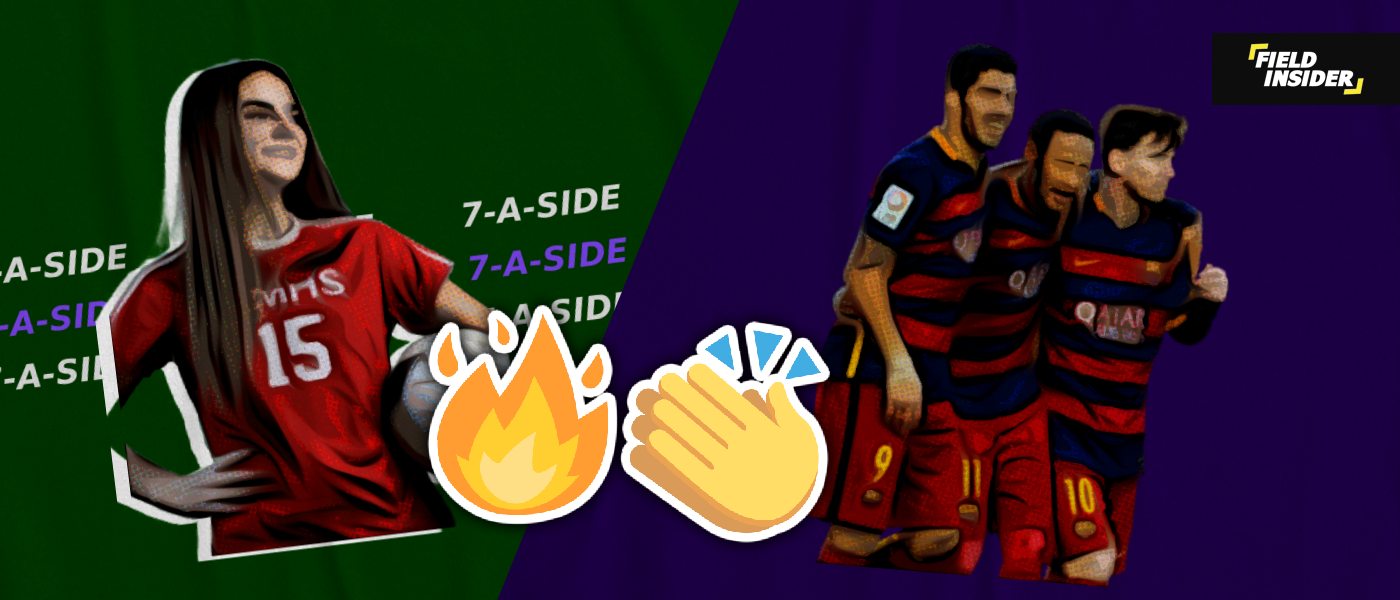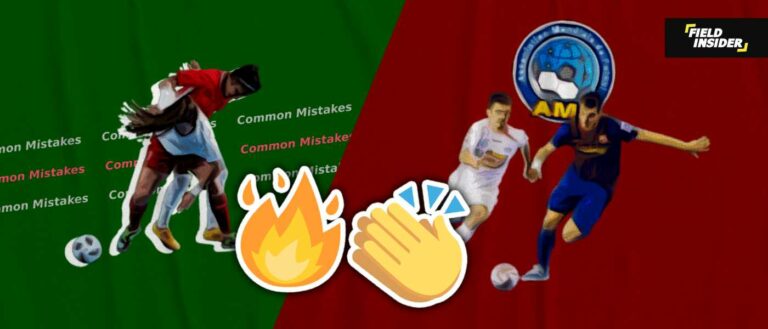Is 7-A-Side Easier Than 11-A-Side Football? – Analysis
Football is a sport celebrated worldwide, not just for its fervent following but also for its varied formats. Among these, 7-a-side and 11-a-side football are particularly prominent, each offering unique challenges and experiences.
This analysis delves into these formats to assess their relative difficulty, exploring aspects from physical demands to tactical complexity. Whether for recreational or competitive play, understanding these differences can help players and enthusiasts appreciate the nuances of each game type.
Key Takeaways
| Aspect | 7-a-Side Football | 11-a-Side Football |
|---|---|---|
| Team Composition | Fewer players (7), requiring flexibility and versatility. | More players (11), with specialized roles and positions. |
| Field Dimensions | Smaller pitch, leading to a faster pace and more interactions. | Larger pitch, allowing for greater strategic depth. |
| Tactical Complexity | Less complex but requires quick thinking and adaptability. | More complex with detailed strategic formations. |
| Physical Demands | High intensity, requiring agility and quick bursts of speed. | Requires endurance and stamina for longer play durations. |
| Technical Skills | Prominent due to more ball touches per player. | Important, but distributed across the team. |
| Mental Aspects | Demands rapid decision-making and constant concentration. | Requires strategic patience and mental stamina. |
The Structure of 7-A-Side Football
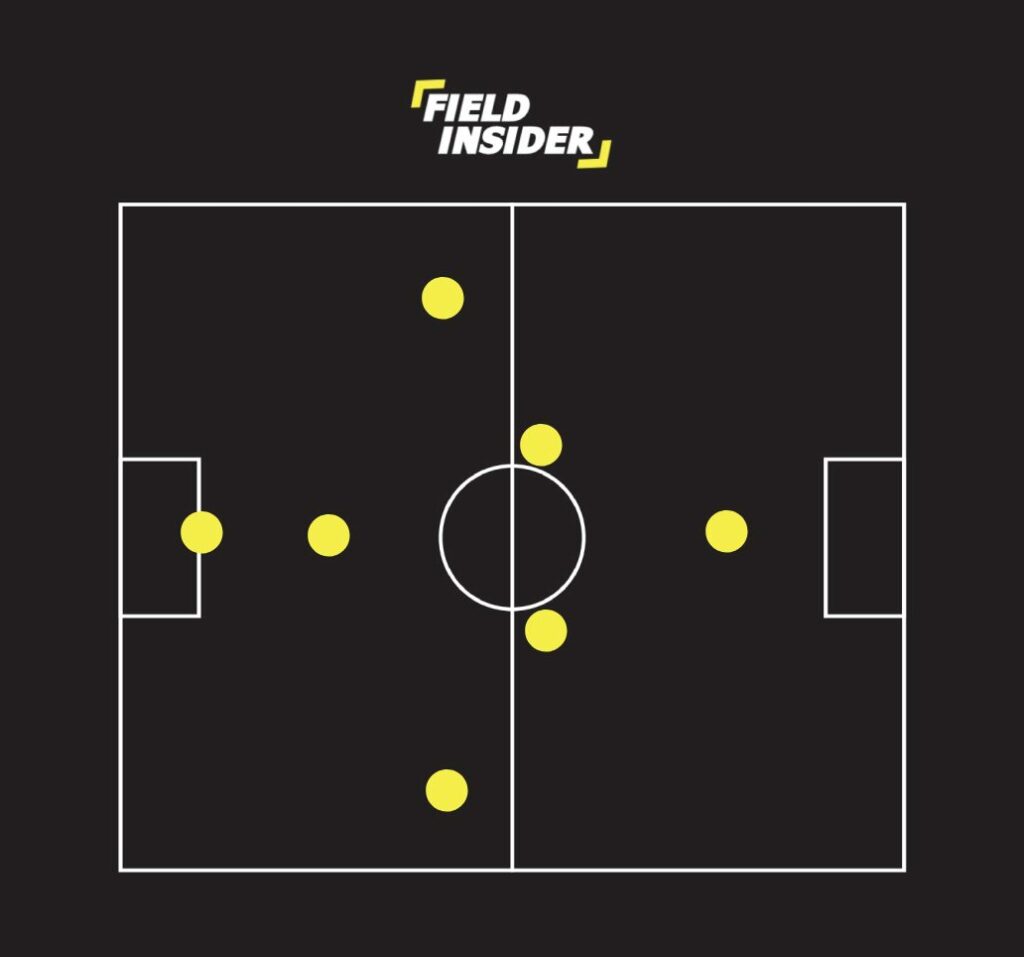
Team Composition
In 7-a-side football, each team consists of seven players, including a goalkeeper. This smaller team size demands versatility and adaptability from the players. Players are expected to perform multiple roles during a game, often switching between offense and defense quickly.
The format provides a unique challenge that enhances individual skills and showcases a player’s ability to adapt to various game situations. Each player’s impact is more pronounced, making individual performances crucial to the team’s success.
Field Dimensions
The field dimensions for 7-a-side football are significantly smaller than those used in 11-a-side games, typically about half the size. This smaller pitch accelerates the game pace, increasing the frequency of player interactions and ball contacts.
The reduced space emphasizes skillful play and quick decision-making, as players have less time and room to operate. These conditions foster a dynamic environment where agility and quick thinking are more beneficial than mere physical strength.
Rules and Gameplay Dynamics
7-a-side football modifies several traditional football rules to suit the smaller team and field size. Notably, there is typically no offside rule, which facilitates a faster, more fluid game style and often results in higher scoring games.
Substitutions are also generally more flexible, allowing teams to adapt quickly to the pace of the game and maintain intensity. For an in-depth understanding of these adaptations, one can explore the specific rules on the 7-a-side rules page, which details how these changes impact gameplay.
Strategies Commonly Employed
Tactical planning in 7-a-side football focuses on quick ball movement and maintaining possession to control the game’s tempo. The strategies employed often require players to be highly skilled in ball handling and quick in space utilization.
Commonly used formations, discussed in detail at 7-a-side formations, aim to maximize space efficiency and create scoring opportunities. Coaches and players work together to develop fluid playing styles that adapt quickly to opponents’ tactics, emphasizing flexibility and rapid tactical adjustments.
The Structure of 11-A-Side Football
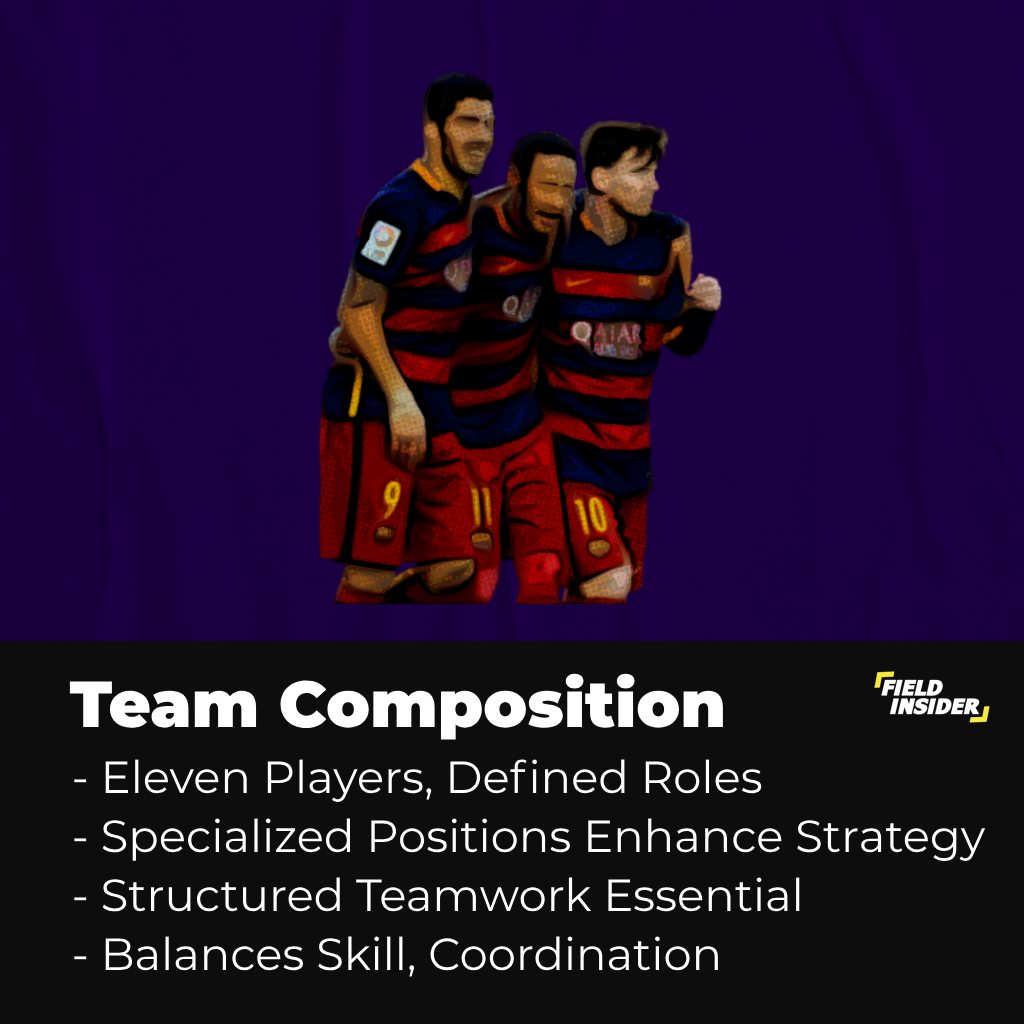
Team Composition
In 11-a-side football, each team fields eleven players, typically structured as one goalkeeper, defenders, midfielders, and forwards. This format allows for specialized roles within the team, with each player often focusing on a specific area of expertise such as defending, playmaking, or scoring.
The diversity in player roles supports a structured approach to gameplay, where teamwork and individual skill are balanced to optimize performance. This composition is crucial for executing complex strategies and covering the larger play area effectively.
Field Dimensions
The standard field size for 11-a-side football is large, with dimensions that can reach up to 105 meters in length and 68 meters in width. This expansive playing area introduces a strategic depth that impacts stamina and spacing on the pitch.
Players must manage their energy efficiently and utilize space strategically to control the game. The larger field size also allows for more tactical formations and provides a stage for showcasing endurance and strategic positioning skills.
Rules and Gameplay Dynamics
11-a-side football follows the comprehensive rules set by FIFA, which include offsides, specific foul definitions, and detailed restart stipulations. These rules add a layer of tactical complexity and discipline to the game, shaping how teams approach defense and attack.
Adherence to these rules is critical for team success and requires players to have a deep understanding of the game’s legal and strategic aspects. Detailed exploration of these rules can enhance one’s appreciation of the tactical nuances present in professional play.
Strategies Commonly Employed
Strategic complexity is a hallmark of 11-a-side football, with teams employing various formations to exploit the strengths of their roster and the weaknesses of their opponents.
Formations like the 4-3-3 and 4-4-2 are popular for their balance of defense and attack, providing a structured approach to managing play across the large field. Coaches and players must develop a coherent strategy that includes defensive solidity, midfield control, and attacking creativity.
Tailoring the Game: Ball Size Variation in Football
In line with guidelines presented in the article “Football Size Guide,” our chart shows the prescribed ball sizes for diverse forms of the game.
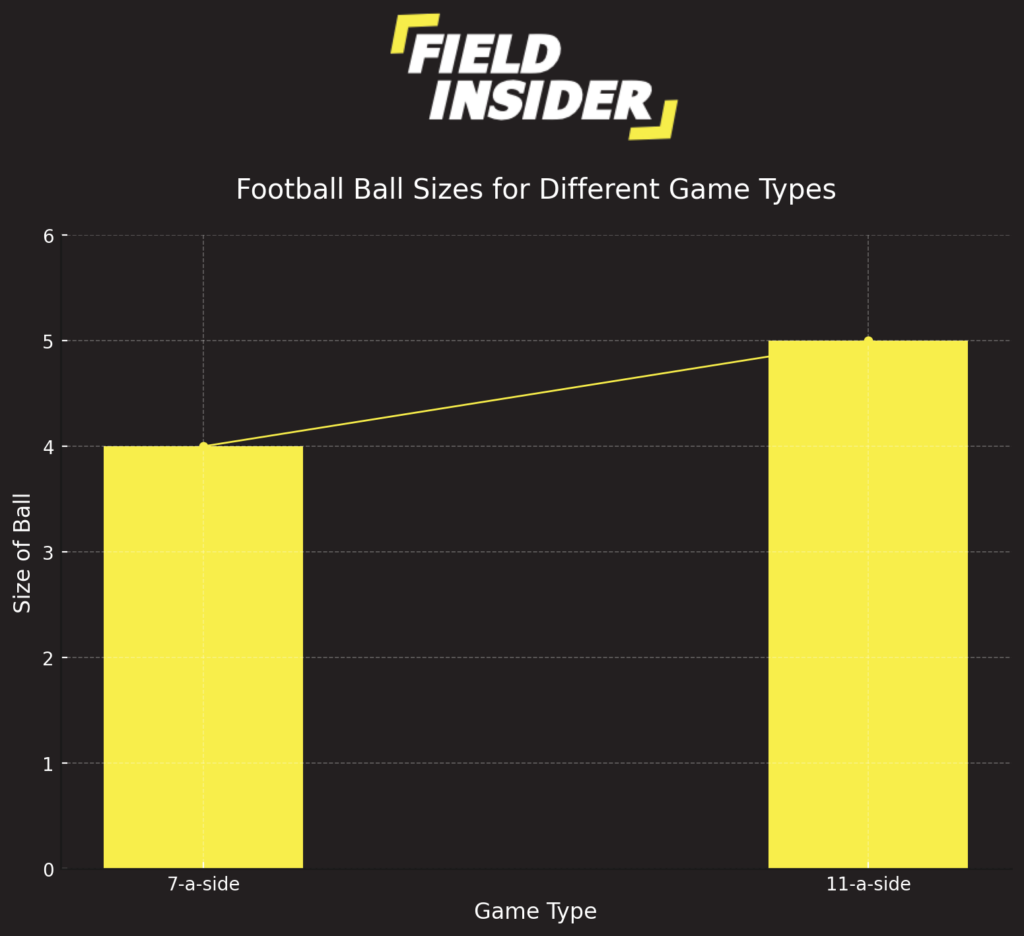
For the more intimate 7-a-side matches, often played by younger athletes or in smaller venues, a size 4 ball is the norm. This smaller ball suits the reduced pitch size and complements the developmental needs of younger players, enhancing control and skill progression.
Moving to the full-scale 11-a-side game, the size 5 ball is the standard. It is designed to meet the demands of adult play on larger pitches, ensuring the ball’s movement is proportionate to the playing area and the physical capabilities of the players.
The deliberate distinction in ball size underpins the sport’s adaptability, catering to a wide range of ages, skills, and playing environments.
Comparison of Difficulty Factors
Physical Demands
The physical demands of 7-a-side and 11-a-side football differ significantly. In 7-a-side football, players encounter frequent, intense bursts of activity, requiring agility and speed. The smaller field size compels players to engage in continuous high-speed actions with limited recovery time.

Conversely, 11-a-side football emphasizes endurance and stamina. Players must maintain a high level of performance throughout a longer and more physically draining match, managing larger spaces and potentially covering greater distances.
Tactical Complexity
Tactical complexity in football increases with the number of players and the size of the playing field. In 11-a-side football, the larger team and field size allow for more intricate tactical formations and game strategies, as seen with formations such as the 4-3-3 formation and the 4-4-2 formation.
This complexity demands strategic depth and thorough preparation. In contrast, 7-a-side football, while also tactical, requires quick tactical shifts and adaptability due to the fast-paced nature of the game and the smaller playing area.
Technical Skills Required
Technical skills are critical in both formats but are often more visibly emphasized in 7-a-side football, where players have more frequent contact with the ball and less space to operate. This setup necessitates excellent ball control and precision.
In 11-a-side football, technical skills are distributed across various roles. Each player contributes to the team’s technical performance in specific areas, such as precise passing, dribbling, or shooting.
Mental Aspects
The mental challenges in both formats of football are demanding but differ in their nature. In 7-a-side football, the game’s quick pace and smaller scale require constant alertness and rapid decision-making. Players must stay mentally engaged at all times to react swiftly to the dynamic gameplay.
On the other hand, 11-a-side football challenges players with longer periods of concentration, where strategic thinking and mental stamina are key. Players need to remain focused to execute long-term strategies and adapt to evolving game situations.
Consideration of Accessibility and Participation
Opportunities for Involvement in Both Formats
Both 7-a-side and 11-a-side football offer unique opportunities for player involvement, though their accessibility can vary based on several factors. 7-a-side football requires fewer players and smaller playing areas. It is often more accessible for casual play, community leagues, and smaller venues.
It is particularly appealing in urban settings where space might be limited. On the other hand, 11-a-side football is widely recognized as the standard format. It boasts extensive infrastructure and support, providing players with opportunities to develop in a highly structured environment.
Accessibility for Different Age Groups and Skill Levels
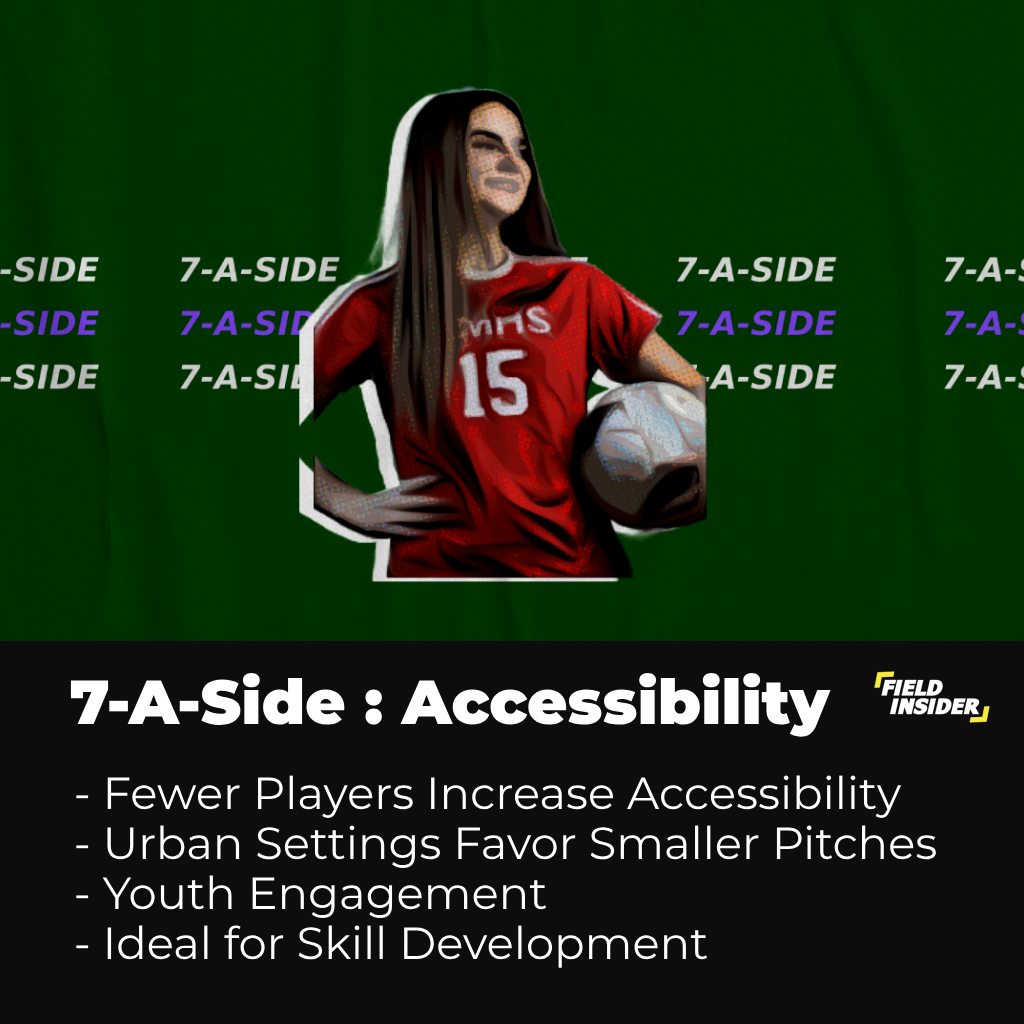
7-a-side football is especially beneficial for younger players and those new to the sport because it offers more touches on the ball and increases player engagement. This format can be found in youth academies and is integral to developing basic football skills and understanding of the game.
In contrast, 11-a-side football can be more demanding due to its physical and tactical complexity, making it more suitable for older or more experienced players who can manage the game’s demands over larger pitches and longer durations.
Factors Influencing Participation Rates
Several factors influence participation rates in both 7-a-side and 11-a-side football. The availability of facilities, coaching, and resources can play a significant role in determining which format is more prevalent in a given community.
Additionally, cultural preferences and the popularity of football variations also affect how widely each format is played. In many regions, 11-a-side football remains the most popular due to its prominent display in professional leagues and international competitions, which inspires widespread participation.
Conclusion
Both 7-a-side and 11-a-side football have their unique challenges and appeal. The choice between the two often depends on what aspects of football one values more—whether it’s the fast-paced, skill-centric play of 7-a-side or the strategic, physically demanding nature of 11-a-side.
Each format offers valuable experiences that cater to different skills and preferences, underscoring the beautifully diverse nature of the sport.


